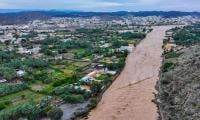Last year, the journal ‘Science’ published a study that made a bold – and elegantly simple – claim: To mitigate climate change, plant a trillion new trees.
Authored by a team of scientists from various research institutions in Europe and the Food and Agriculture Organization of the United Nations, the study attracted considerable mainstream media coverage.
Soon after, tree-planting initiatives across the globe bloomed. Ethiopia announced it would plant 350 million trees in a single day and India promised to plant 220 million. The US unveiled a plan to establish forests in Asian and African cities. Companies ranging from Biocarbon Engineering to EasyJet to Warner Music turned the spotlights on their tree-planting initiatives.
The excitement was understandable. The idea that we could negate the effects of centuries of deforestation and keep the planet cool enough to survive simply by planting some trees sounded really good.
The study found that a trillion new trees could store 205 billion metric tonnes of carbon – the equivalent of 25 percent of the current atmospheric carbon pool and enough to help keep us under a 1.5-degree Celsius global temperature rise. Climate action, meet your magic bullet.
Yes, we need to plant trees. Close to one billion hectares (2.5 billion acres) globally is estimated to be available for some kind of forest restoration. If only it were that simple.
To succeed in the fight against climate change we have to do two big things: Stop emitting carbon dioxide and remove the excess carbon dioxide we have already emitted. Restoring forests is the best way to do that second part – but not all restoration is created equal.
In the buzz surrounding the study published in ‘Science’, what got scant attention was the cost of planting a trillion trees. With conservation needs already facing a $350bn annual gap between what we are spending and what is needed to secure ecosystems, planting and stewarding a trillion new trees will require mobilising huge amounts of money – something the world does not seem brave enough to do.
According to the paper, we would have to reforest approximately 0.9 billion hectares (2.2 billion acres) of land – an area the size of China – to reach their magic number, and at an average cost of $3,000 per hectare, the invoice for this gardening project is prohibitively expensive.
But there is a more realistic way to replace the trees we have destroyed: Help nature run its course. It is a real, science-based strategy known as assisted natural regeneration.
Excerpted from: ‘Why Mother Nature Is the Key to Reforestation Planet Desperately Needs’.
Commondreams.org
As usual, any such deal, aiming to resuscitate ailing economy, brings to fore urge and resolve to halt further...
A representational showing sticky notes on a board. — Unsplash/FileThere are some common themes from the lives...
Whether the Daanish Schools effort has been able to live up to its principles or not may be debatable
According to the federal government, last year 653,100 people experienced homelessness on a single night in America
Another advantage for Pakistan is the enhanced teledensity and internet penetration
Both media spheres need to dovetail in amplifying the urgency of addressing climate change at the local, national, and...







